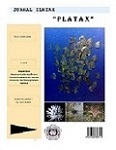Coral Covers and the Abundance of Reef Fish in Community Base Management Marine Protected Area (CBM-MPA) Bahoi Village North Sulawesi, Indonesia
DOI:
https://doi.org/10.35800/jip.v11i1.43944Abstract
In the last few decades, coral reef ecosystem has been under significant pressure due to anthropogenic impacts and naturally driven factors. The coral reef ecosystem is unique because it has very high biodiversity and many organisms depend on its existence. Every organism in a coral reef ecosystem uniquely contributes to how coral reef communities survive and function. However, coral reef ecosystems are also vulnerable to pressures that cause degradation, interfering with the ecosystem balance. This study aims to monitor the ecological condition of coral reefs and the abundance of reef fish to see how the MPA program in Bahoi village helps the coral reef ecosystem from degradation. The data was collected using Line Intercept Transect (LIT) method, which was drawn 70 meters transect line horizontally at a depth of 3-5 meters. The same transect line was also used to collect data about reef fish by using a Visual Census. The observation distance length is 2.5 meters to the left and right of the transect line. Results of the study showed that the coral cover of MPA Bahoi Village is in the Fair category and the abundance of reef fish in the MPA area is in the Moderate category.
Keywords: Coral Cover; Coral Reef; Marine Protected Area (MPA); Monitoring; Reef Fish
References
Aldyza, N., Barus, T. A., Mulya, M.B., Sarong, M. A., Afkar., Rahmad., Andi, F., Yuarza, G. 2022. Coral Covers and The Abundance of Chaetodontidae in Suaka Alam Perairan of Weh Island Aceh. Jurnal Biodjati. 7(1):56–65
ENGLISH, S., WILKINSON, C. and BAKER, V. (1997 Survey Manual for Tropical Marine Resources. 2nd Ed. ASEAN-Australian Science Project: Living Coastal Resources, Australian Institute of Marine Science. Australia: Townsville.
Gomez, E.D., H.T. Yap., 1988. Monitoring Reef Condition, Coral Reef Management Handbook. Second Adition. R.A. Kenchington dan Bryget E.T. Hudson (Editor) Unesco Regional Office for Science and Technology for South East Asia. Jakarta.
Houringan, T. F., Tricas, T.C., Reese, E.S. 1988. Coral reef Fishes as an indicator of Environmental Stress in Coral Reefs. Springer-Verlag. New York Inc. pp 107-132
Hughes,P.T., Barnes, L.M., Bellwood, R.D., Cinner, E. J., Cumming, S. G., Jackson, B.C.J., Kleypas. Joanie., van de Leemput, A.I., Lough, M.J., Morrison, H.T., Palumbi, R.S., Van Nes, H.E., Scheffer, M., 2017. Coral reef in the Anthropocene. Nature 546:82-90
Manuputty, Amma.E.W., Djuwariah. 2009. Panduan Metode Point Intercept Transect (PIT) untuk Masyarakat. COREMAP-LIPI : Jakarta.
Odum, E.P. (1971). Fundamental of Ecology. W.B. Sounders Company, Philadelphia.
Prasetyanda, I. M. (2011). Korelasi Tutupan Terumbu Karang dengan Kelimpahan Relatif Ikan Famili Chaetodontidae di Perairan Pantai Pasir Putih, Situbondo. Skripsi. Surabaya: Institut Teknologi Sepuluh November.
Regulation of The Minister of Environment of Republic Indonesia No. 4 of 2001
R I Khasanah et al 2020 IOP Conf. Ser.: Earth Environ. Sci441 01212.
Spalding, M., Burke, L., Wood, A.S., Ashpole, J., Hutchison, J., Zu Ermgassen, P.. 2017. Mapping the Global Value and Distribution of Coral Reef Tourism. Mar. Policy 82:104–13.
Walukow, E., Runtulalo, S., Rumahlaiselan, S., Runtukahu, I., Puasa, R., dan Damima, J. 2016. laporan akhir pengelolaan daerah perlindungan laut berbasis masyarakat untuk pelestarian habitat penting di desa bahoi. 2016. Manengkel Solidaritas. Manado. Indonesia.
Wilkinson, C. 2003., Green, Alison., Almany, Jeanine., Dionne, Shannon. 2003. Monitoring Coral Reef Marine Protected Areas. Australian Institute of Marine Science. Australia.
Wiryawan, B. & Darmawan, A., 2006. Panduan Pengembangan Kawasan Konservasi Laut Daerah (Marine Management Area/MMA) di Wilayah COREMAP II – Indonesia Bagian Barat. Jakarta.
Downloads
Published
How to Cite
Issue
Section
License
Copyright (c) 2022 Stephanus V. Mandagi, Billy T. Wagey, Deiske A. Sumilat

This work is licensed under a Creative Commons Attribution-NonCommercial 4.0 International License.
COPYRIGHT
Authors who publish with this journal agree to the following terms:
Authors hold their copyright and grant this journal the privilege of first publication, with the work simultaneously licensed under a Creative Commons Attribution License that permits others to impart the work with an acknowledgment of the work's origin and initial publication by this journal.
Authors can enter into separate or additional contractual arrangements for the non-exclusive distribution of the journal's published version of the work (for example, post it to an institutional repository or publish it in a book), with an acknowledgment of its underlying publication in this journal.
Authors are permitted and encouraged to post their work online (for example, in institutional repositories or on their website) as it can lead to productive exchanges, as well as earlier and greater citation of the published work (See The Effect of Open Access).






































